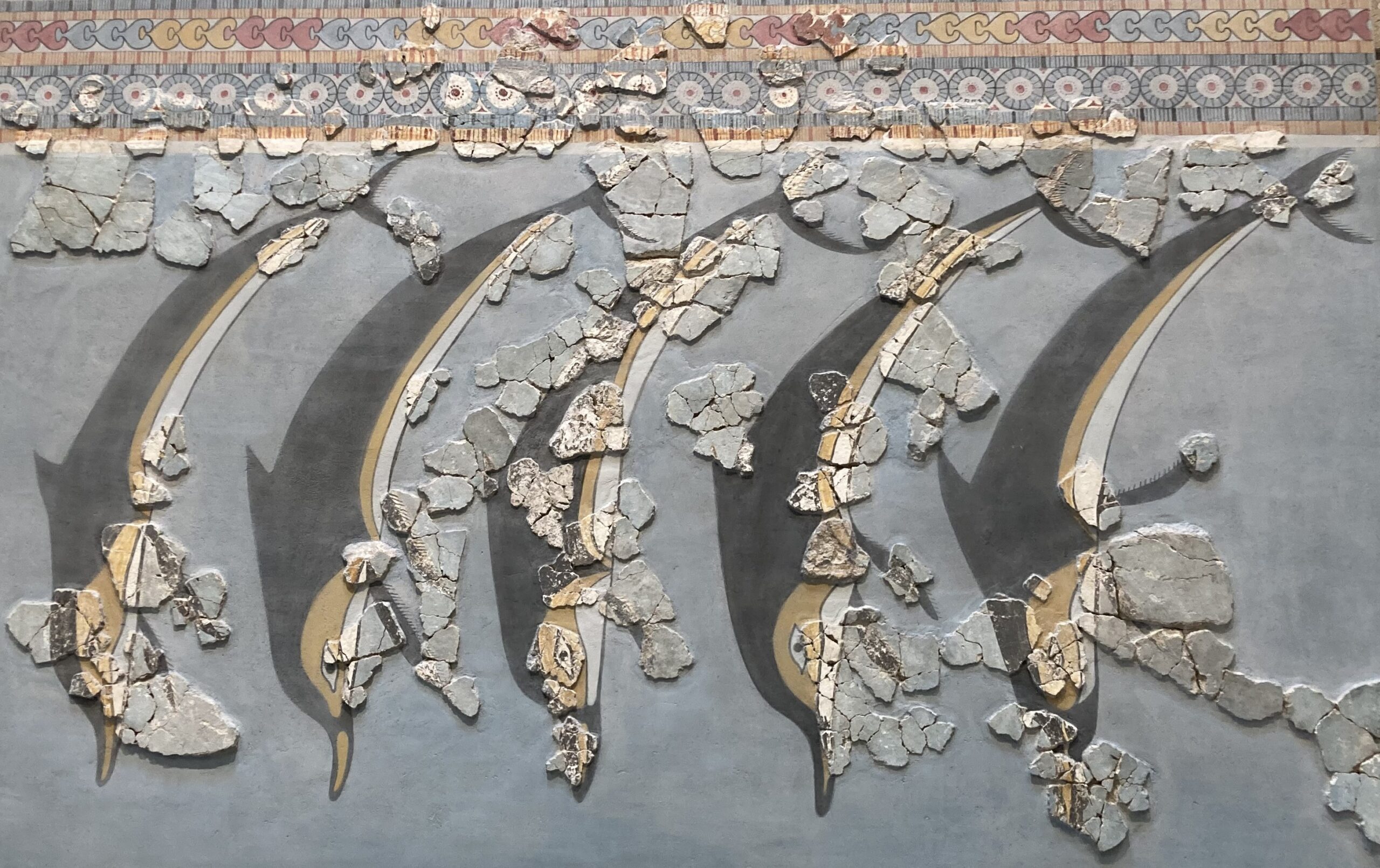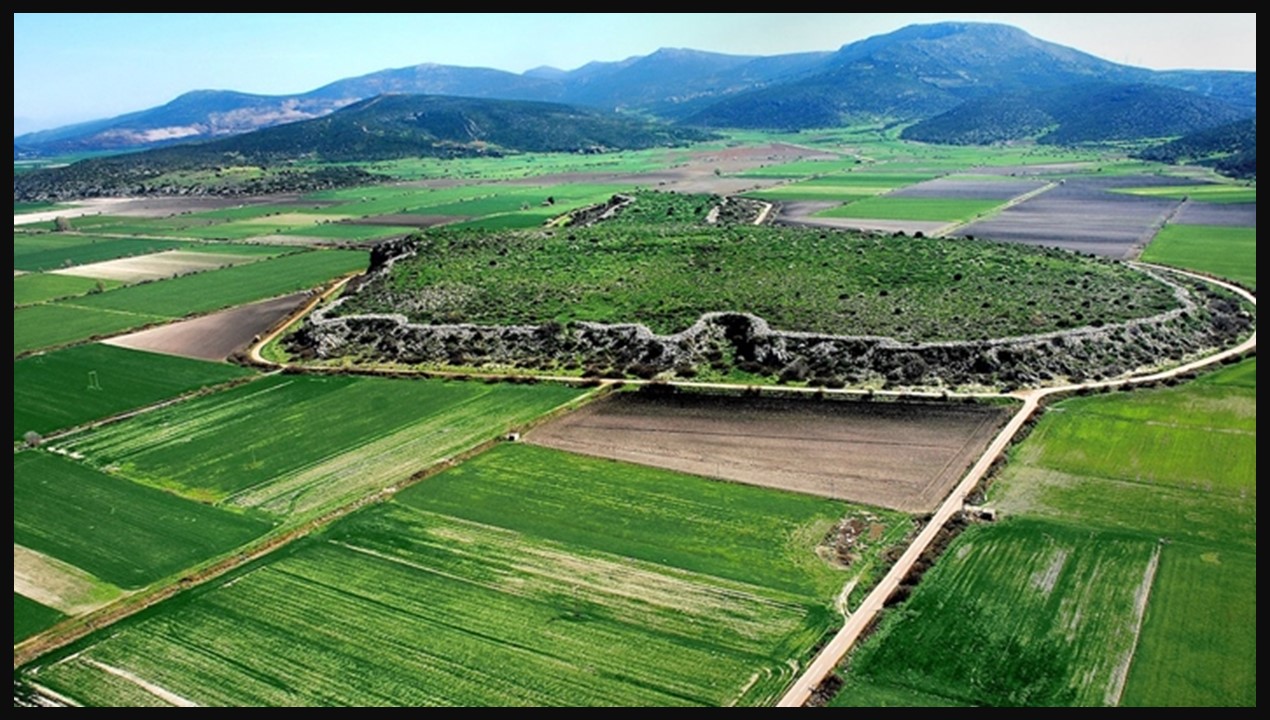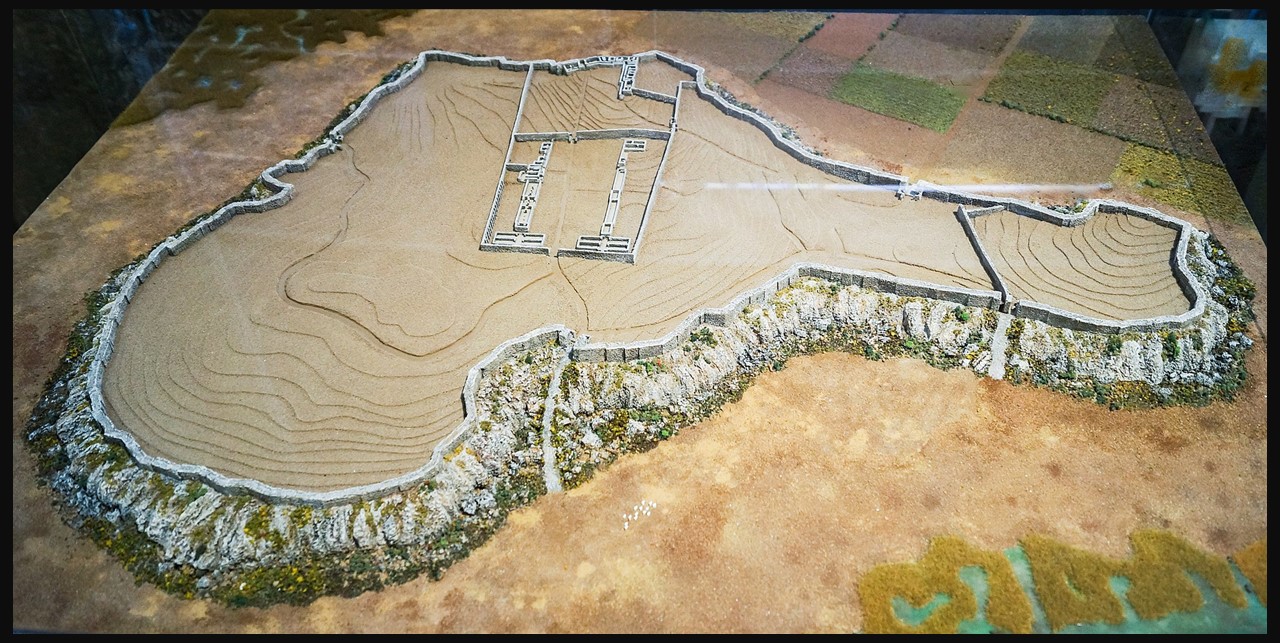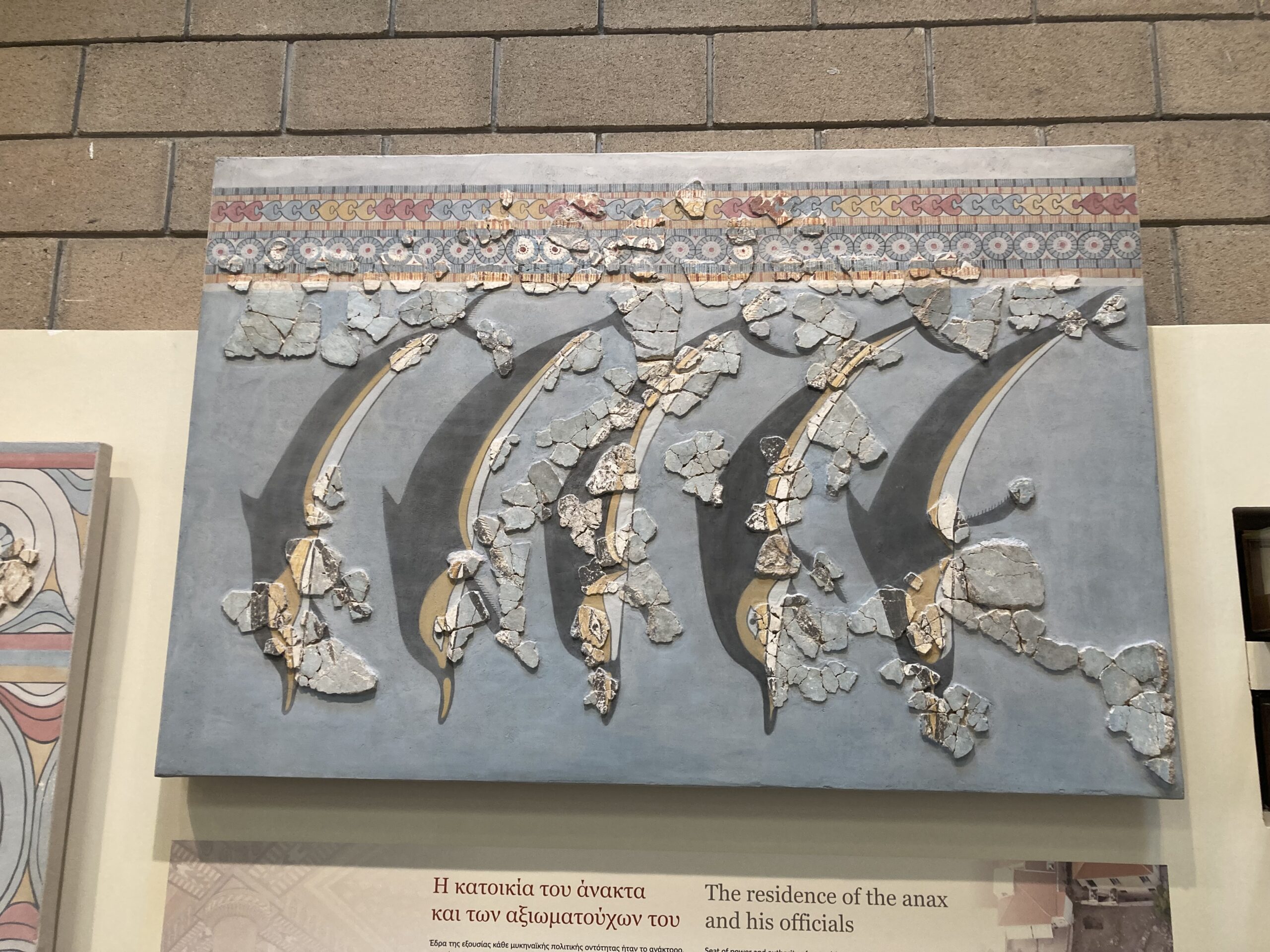
On February 19, 2024, I fulfilled a long-awaited wish by visiting the Archaeological Museum of Thebes, one of Greece’s most significant archaeological museums. The collections, some of which are rare or unique, have been on my bucket list for quite some time. These artefacts, originating from excavations across Boeotia, span from the Paleolithic era to post-Byzantine times, providing a comprehensive view of the region’s cultural history. The Dolphin Frieze from the Mycenaean Acropolis of Gla was at the top of my list; seeing it in person was a moment of sheer delight and fulfilment.
The Mycenaean period is of profound significance in both art and history, acting as a vital cultural link between the Bronze Age civilizations of the Aegean and the classical world of ancient Greece. Artefacts from this era, ranging from architecture to fresco painting and pottery, illuminate the emergence of distinct artistic styles and techniques that greatly influenced classical Greek artistry. Mycenaean builders demonstrated their prowess through the construction of grand palaces, robust fortifications, and imposing tombs, showcasing advanced architectural and engineering capabilities. Their vibrant fresco paintings, characterized by bold depictions of figures, animals, and geometric patterns, stand as a testament to their artistic abilities. Moreover, the Mycenaean civilization played a pivotal role in shaping the socio-political landscape of ancient Greece, laying the groundwork for the development of Greek culture and identity.


https://commons.wikimedia.org/wiki/File:Gla_-_Modell_of_archaeological_site.JPG
The least known of all Mycenaean Palaces is probably that of Gla in Central Greece. Perched atop a rugged hill, the Mycenaean Acropolis of Gla is a site of historical and archaeological significance dating back to the Late Bronze Age. This fortified settlement, strategically positioned on the Boeotian plain jutted into Lake Kopais (now drained) or formed an island within it. It served as a vital center of the Mycenaean civilization, showcasing the architectural prowess and strategic foresight of its ancient inhabitants. With its imposing Cyclopean Walls, about 3 m thick, and 2.8 km long, enclosing about 235,000 square meters of land, and commanding views, the Acropolis of Gla stands as a testament to the military and cultural achievements of the Mycenaeans, offering invaluable insights into their society, economy, and interactions within the broader Aegean world.
The Acropolis of Gla is famously associated with the ambitious endeavour to drain Lake Kopais, a feat considered unparalleled in Bronze Age antiquity, highlighting the advanced technical knowledge possessed by Mycenaean engineers. It is also known for its sheer magnitude and complexity. Encircled by robust Cyclopean Walls featuring four gates constructed from imposing stone blocks, Gla reigns as the largest fortified Mycenaean Acropolis within Greek territory. Less known, but equally important is the site’s residential area, a sprawling L-shaped edifice, often hailed as a ‘Palace’, and situated in the site’s northern expanse. Built atop an engineered plateau, this ‘Palace’ or, Melathron’, unfolds into three distinct sections, featuring a layout reminiscent of the renowned Megaron structures found in ancient centers like Tiryns, Mycenae, and Pylos. However, the absence of hallmark Mycenaean Palace elements, specifically a “throne room”, a circular hearth, and a “bathroom”, raises questions about its classification as a fully-fledged Mycenaean Megaron.
Among the buildings’ debris, archaeologists discovered as early as 1893, evidence of a wastewater system, unique clay roof tiles suggesting pitched roofs, and evidence of decorative wall frescoes, damaged and fragmentary, but extremely precious. Today, these fragments, discovered in the elongated East Wing of the South Enclosure, during excavations conducted by S. Iakovidis, in the early 1980s and 1990s are exhibited in the Archaeological Museum of Thebes. The most remarkable of these fragments show diving Dolphins and parts of other maritime scenes, including large Argonauts. These fresco fragments were expertly reconstructed by Christos Boulotis. (See Bibliography)

The Dolphin Fresco from the Mycenaean Acropolis of Gla is a remarkable artefact that showcases an unusual naturalism and a sophisticated understanding of marine life, captured through the depiction of Dolphins with an astonishing level of detail and realism. These elegant creatures, spanning 75 to 80 cm in height, are painted against a vivid blue background, highlighting their dynamic forms and graceful postures. The Dolphins, numbering between six and seven, are depicted in a uniform size and posture, their bodies elegantly curved into open arches or crescents, embodying the fluidity and grace of living dolphins. Their upper bodies are painted black, featuring a triangular dorsal fin, while their bellies are a contrasting white, delineated from the black with yellow stripes. Their eyes are almond-shaped, set against a yellow background, adding a striking detail to their overall appearance.
The use of colours in the Gla Dolphins fresco draws closer to the real hues of these marine creatures, with the black, white, and yellow providing a stark contrast to the deep blue sea they inhabit. This colour choice not only enhances the naturalism of the scene but also demonstrates the Mycenaeans’ advanced skills in pigment selection and application. Indeed, recent analyses have revealed the use of rare, imported lapis lazuli mixed with hematite and possibly an organic colour derived from murex, underscoring the significant effort and resources devoted to achieving the fresco’s vibrant colours.
This fresco, along with other Dolphin Paintings of the Aegean Bronze Age period demonstrates a persistence of themes drawn from nature within Mycenaean art, suggesting a deep-rooted appreciation for the natural world. The Gla Dolphins, with their lifelike appearance and intricate detailing, stand as a testament to the Mycenaean civilization’s artistic prowess and their enduring fascination with the sea and its inhabitants.
For a Student Activity, inspired by the Dolphin Freeze, please… Check HERE!
Bibliography: Christos Boulotis, Reconstructing a Dolphin Frieze and Argonauts from the Mycenaean Citadel of Gla, ΜΕΛΕΤΗΜΑΤΑ 72, Mycenaean Wall Painting in Context, National Hellenic Research Foundation, Athens, 2015, pp. 371… https://www.academia.edu/39148590/RECONSTRUCTING_A_DOLPHIN_FRIEZE_AND_ARGONAUTS_FROM_THE_MYCENAEAN_CITADEL_OF_GLA_In_MYCENAEAN_WALL_PAINTING_IN_CONTEXT_ATHENS_2015_371_403